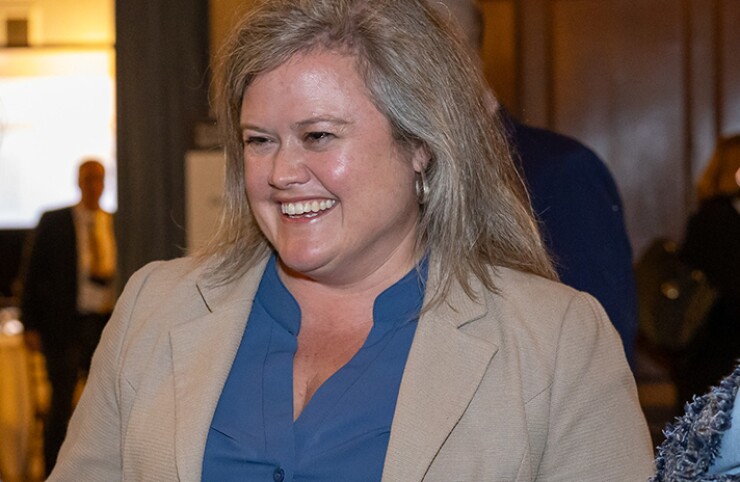In a ceremony watched by thousands of issuers, the White House Thursday unveiled an overhaul of how it sends billions of federal funds to cities, states and nonprofits in an effort to cut red tape, expand the pool of grant recipients and simplify reporting and compliance.
“The changes being finalized and announced today are historic and I believe will have immense immense impact in the years ahead,” said Jason Miller, deputy director for management at the White House Office of Management and Budget and the government’s chief operating officer. The changes represent a “completely overhauled version” of so-called uniform grants guidance that went into effect 10 years ago and that govern how federal agencies advertise and manage their grants and recipients use and comply with the funding.
“Lowering the burden, which is exactly what this new guidance will do, means that we will get more value from every dollar,” he said.
Donna Alberico
The rules apply to all federal financial grants, loans, emergency funding and cooperative agreements, which totaled $1.2 trillion last year, Miller said during the ceremony, which was attended by issuers and officials and livestreamed with more than 6,000 viewers. The money can account for up to one-third of government budgets, he said.
The revisions are a “really big deal,” Emily Brock, the Government Finance Officers Association’s federal liaison, told The Bond Buyer. The GFOA has been pushing OMB to, among other things, publish the guidance in plain language to make it easier to apply for and comply with grants.
Speaking at the White House event, Brock said the GFOA along with the National League of Cities and National Association of Counties “applaud these efforts to update uniform guidance, which allow us to have thoughtful discussions about grants partnerships with our elected officials, our federal partners and our communities.”
The revised rules will require federal agencies to make their Notice of Funding Opportunities “as clear and concise as possible” to help broaden the pool of recipients like smaller cities, according to
“The changes improve our ability to get money into communities – equity is a major driver of this effort,” Palm said. “They allow us to collect better data so the burden of data reporting is targeted and meaningful to measure outcomes of the grants, which helps us make the case to Congress about why the money is important.”
The move to lower “burdensome” reporting and compliance will help finance directors talk to colleagues and their elected officials about federal grants, said Nancy Feldman, the chief of the Division of Fiscal Management for Montgomery County, Md., who also spoke at the OMB event.
“We want to be compliant and making it easier for us to do so makes it better for everybody,” Feldman said. “This new refreshed way of thinking about federal, state and local partnerships benefits us all and we’re really grateful and looking forward to implementing it.”
Agencies are required to put the revisions into effect by Oct. 1.
